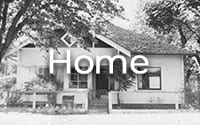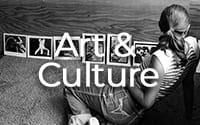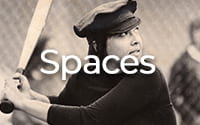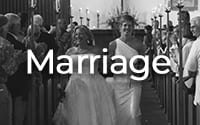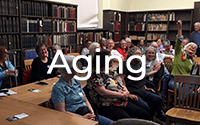Migration to Eugene
Migration to Eugene
Who are the seekers of the promised land? In the 1960s-90s Eugene, Oregon was known as a “lesbian mecca,” drawing hundreds of women from across the United States.

“Eugene was like heaven to me.”
– Gail Pyburn –
LESBIAN NIRVANA
Most of the young women who moved to Eugene in the 1960s-70s didn’t know exactly where Oregon was, although they knew it was somewhere on the west coast. Along with hundreds of thousands of other young people across the country they joined the countercultural westward migration, enticed by images of the 1967 “Summer of Love” in San Francisco and the possibility of creating lives with different priorities than those of the generation that preceded them. Many of these young women had been involved in civil rights and anti-Vietnam war demonstrations in high school and college and now embraced the women’s liberation movement. The “lesbian lands” in southern Oregon drew women who wanted to help create non-patriarchal communities, explore women-centered work and rituals, and develop organic farming. Some of the narrators lived on these lands before joining the lesbian community in Eugene. The women who moved to Eugene represented a large gay and lesbian exodus from homophobic families and restrictive hometowns to cities that offered more acceptance, protection, and community. Men, who generally had more earning power, established gay neighborhoods in cities such as San Francisco, Manhattan, and Portland, while many women congregated in less expensive neighborhoods in Oakland, Brooklyn, and Eugene. As women came to Eugene, they wrote to their friends across the country extolling their experiences of lesbian communal living and collective work. Throughout the 1970s lesbians arrived by VW buses, old cars, motorcycles, and Greyhound buses and settled to create a vibrant lesbian community that valued social experimentation and personal exploration.

GALLERY
FOR TEACHING AND RESEARCH
SPOTLIGHT: LESBIAN EUGENE – A LARGELY WHITE COMMUNITY
While the stories featured in this exhibit are deeply personal, they also tell a particular collective story about those who came to Eugene and stayed to make their lives here. There were, of course, many women who came and didn’t stay and their memories of lesbian Eugene would add additional perspectives.
Creating a lesbian community in a small Oregon city in the 1970s and 1980s appealed mostly to young, white women. The rural state and its small towns was not a draw for many lesbians of color as the demographic of the Eugene lesbian community confirms. Oregon’s particularly racist history as a state that enshrined Black exclusionary laws in its founding Constitution and maintained housing restrictions and “Sundown Towns” well into the 1960s ensured that Oregon remained one of the whitest states. Lesbians of color looking for community tended to create them in their home cities or moved to cities that were more racially diverse.

International Women’s Day program – Eugene, 1976
Additionally, lesbians of color were also often skeptical of the separatist ideals and spaces celebrated by many white lesbian feminists at the time. Lesbian Eugene is shaped by these larger contexts of culture and history.
Ideas
Visit the Eugene Lesbian Oral History archive to read a letter sent to Harriet Rubin by a friend extolling 1970s lesbian Eugene.





